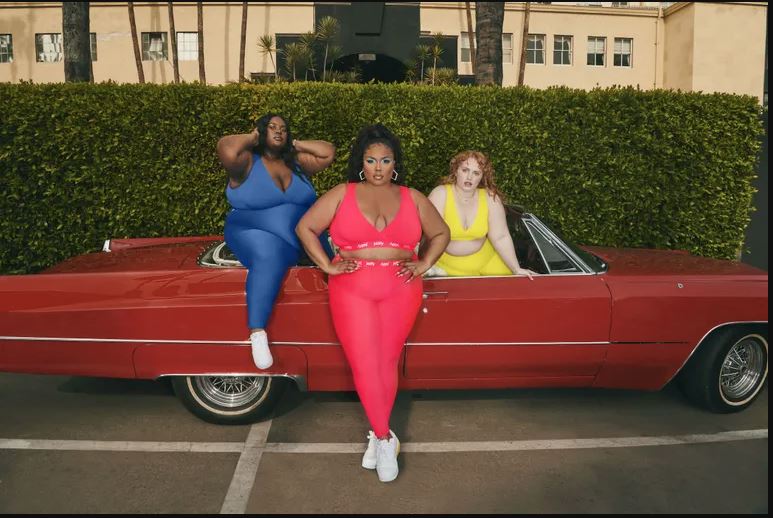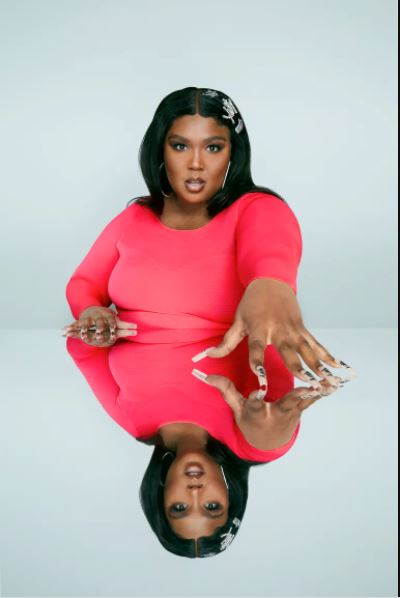
Like many people raised in the era dominated by Spanx, which placed multiple generations of women into light beige nouveau-girdles from the late Nineties to the early 2000s, Lizzo has bad memories of compression garments.
“As early as I started to learn to be ashamed of my body, I was in shapewear,” the 33-year-old musician explains. “I was in girdles, and I was binding my stomach.” She wore garments with plastic boning, she recalled, “and it would snap halfway through school, [and] like, cut into my skin. I take it off at the end of the day, and I’m bleeding, and [the undergarment] broke skin, and I’m like, I’m in seventh grade!” She normalised it, she said. “I thought it was super normal to be that dissatisfied and that willing to hide my body.”
In the years that followed, Lizzo — who was born Melissa Jefferson — “started to discover my self-love,” and “went fully in the opposite direction.” You know: “I stopped trying to hide. I stopped wearing bras and even fucking panties.”
Then she “got into fashion,” she said, and began to think of her body in an even more pleasurable, playful, nuanced way. “I started to have fun with the shape of my body. And now that I actually enjoy my body, there’s nothing to hide.” So now she’s seeking revenge, of a kind, on the pieces that hurt her so long ago: she wants to revolutionise the shapewear industry with her own brand, Yitty.
Though the very foundation of shapewear is shame — they are garments, after all, that smooth and compress the elements of our bodies that some unknown entity deems unappealing — Lizzo believes it has the potential to be empowering. That’s the idea behind Yitty’s shapewear, she said: “It isn’t a bad thing if I’m not using it to do bad things to my body.” It’s not about making your clothing look smooth and “perfect”. “It’s about you taking ownership of your physical presence, your identity in this world,” she said. “And not allowing a piece of clothing to dictate how you should feel about your body. You’re telling the piece of clothing, ‘This is how I feel about my body today.'” If you want to emphasise a “Coke bottle” shape, you can do that one day, and the next, an apple silhouette. “We’re giving the consumer the autonomy to choose different levels of compression and style. They’re really the ones who are making the decisions. They’re the boss. You know, it’s in their hands.”
Wearing a hot pink t-shirt from the line, Lizzo explained how she actually developed the brand, which has been in the works for “a long time”. She’s partnered with Fabletics, the activewear brand founded by Kate Hudson in 2013. “A lot of the technology was already built-in,” she said of their selection of fabrics, which vary in compression strengths and come in a multitude of flesh tones.
Nearly everything she suggested, Lizzo said, Fabletics told her, “we already know how to do that.” She met with several other investors who didn’t grasp the scale of her vision or offered her the chance to make a small capsule. Yitty, whose first drop arrives 12 April, will include three collections to begin with: Nearly Naked, “designed to comfortably shape and firm your natural curves all day,” according to a press release; Mesh Me, whose styles can be worn as underwear or outerwear; and Major Label, which comprises lifestyle pieces. Yitty’s sizing will run from a 6X to an extra small.
Most intriguing — which is to say, perhaps most revolutionary — are the clothes meant to be worn as outer garments. “I was like, I want to create a product that, even if you see it, it’s not shameful. It’s not embarrassing. It’s actually sexy and liberating and you could take your shirt off and be like, ‘Yeah, I gotta bright ass blue bra or shaping bra or whatever underneath my shirt.’ And even if you wanna go to the club, you could take your work clothes off and you got a whole fit underneath.”
As clothing manufacturing has become faster and more globalised, engineered not for living life but for the possibility of a look, clothing itself has gotten worse-fitting. The promise of T-shirts, tops, underwear and bras that don’t ride up is as revolutionary as Lizzo proclaims. “I would walk in the mall already defeated because I knew I wasn’t going to find anything but jewellery that day,” she recalled. “And the industry is changing for bigger bodies. But very slowly.”

And though shapewear brands are a booming fashion market, Yitty appears at a significant inflection point in the body positivity movement. Plus-sized models continue to appear on catwalks, but the very brands that cast them in shows don’t sell clothing in their size in their stores. Shapewear still focuses on achieving an idealised form, and its rise — through brands like Kim Kardashians Skims, which was recently valued at over $3 billion, and Rihanna’s smash-hit undergarment brand Fenty—has happened concurrently with a new prominence of silhouettes in fashion that emphasise the physical form. Designers like Nensi Dojaka and LaQuan Smith tightly trace and shape the lines of a wearer’s body into a vivacious form, while revealing styles from brands like Miu Miu, with their belly-baring crop tops and butt-skimming miniskirts, are as much about what the clothing covers as what they don’t.

For Lizzo, the shapewear boom predates those runway trends: athleisure, she pointed out, “had been a trend, and then it became a staple. Like we dressed up to work out, but we’re not working out. And it’s a look: you put some jewellery on, a cute sneaker, a messy bun, and you go get your coffee. It’s an aesthetic. I think showing off your sexy-ass body is a good thing.” It wasn’t so long ago that yoga pants and leggings were “shocking in public.” Now they’re the aspirational uniform of every influencer and celebrity. Plus, as catwalk fashion continues to infiltrate fast fashion designs, bodycon dresses remain the standard shapes on sites like Shein and Fashion Nova.
Still, many fashion observers worry the industry is backtracking to an era when bodies themselves were trends. Lizzo resisted this assessment: “I, first of all, think all bodies are beautiful, and thin girls are beautiful and deserve to be models, and so do big girls and girls all in between.” But many of these silhouettes, Lizzo pointed out, clearly reference the early 2000s, when an ultra-narrow body type was promoted by the fashion industry as both aspirational and a standard. “I think that people believe that because, you know, it was popular in the early 2000s and that it was on a certain body type in the early 2000s, that it should be that way now. But that’s not true.” She recalled a friend, a size 14, who recently chopped the waistband off her jeans, wore the waistband as a top, and the jeans as low-rise. “I think it’s gonna be interesting to watch how we rebel,” she said, “against what they think they’re doing—I think you think like, Oh, because these are the styles that are popular, now these are the bodies that have to be.
“It’s not going to go down like that.” At least in Yitty’s world

